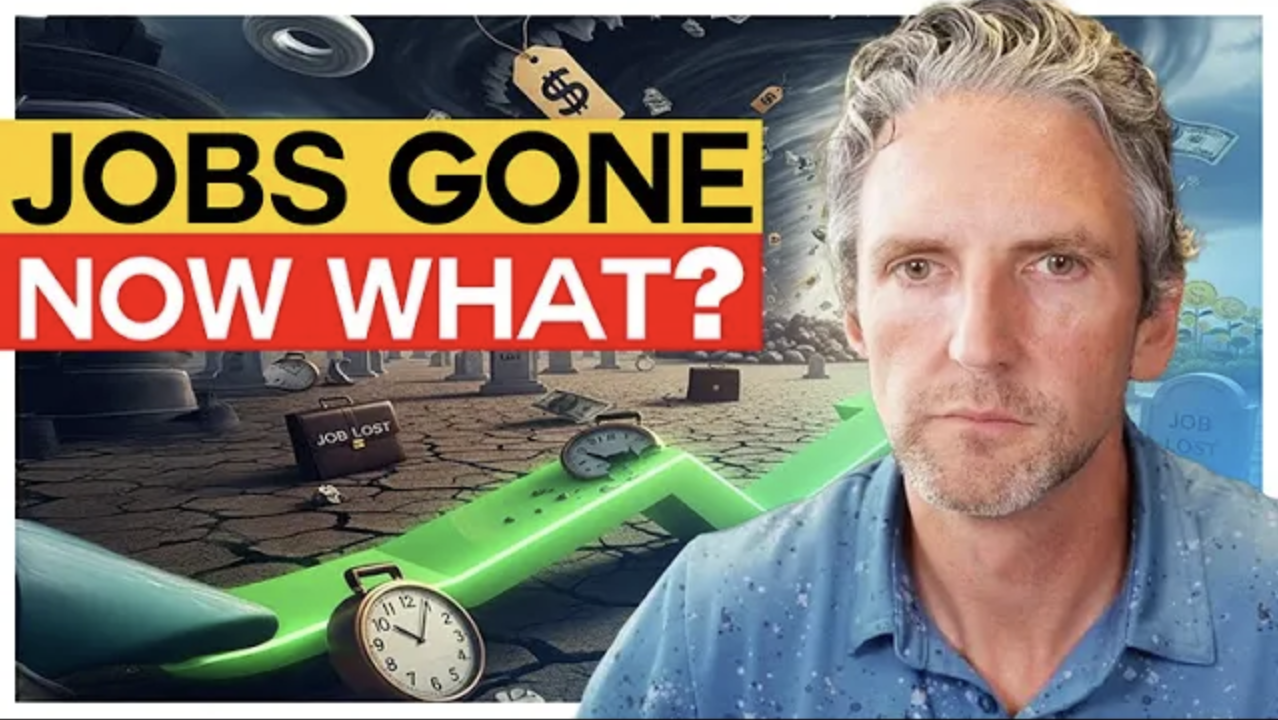Categories
FED, Federal Reserve, Jobs, Wealth Building, Wealth Building through Real EstatePublished October 11, 2025
Jobs Are Vanishing, Inflation Is Back — What the Fed Isn’t Telling You

The economy is not as strong as the headlines make it sound. The Federal Reserve says the job market looks healthy, Wall Street claims everything is fine, and yet, something feels off. That “something” just got confirmed when the Bureau of Labor Statistics (BLS) quietly revised the U.S. jobs report down by nearly one million jobs.
That is not a typo. The BLS overstated the number of jobs by 911,000, the largest downward revision since the Great Financial Crisis. And while officials brushed it off as a technical correction, the implications are massive. For ordinary Americans, it means the job market is weaker than advertised. For investors, it signals opportunity.
The Broken BLS and the Data Dilemma
The Bureau of Labor Statistics employs about 2,100 people and runs on a $655 million annual budget. Yet, the agency admits it struggles to gather accurate data on the U.S. labor market. Their surveys depend on voluntary responses from businesses, and guess what? Hardly anyone fills them out.
Response rates have plummeted, and revisions like this one happen because late data trickles in months later. The result is that policymakers, the Federal Reserve, and the markets are often making decisions based on outdated and incomplete information.
Here is the bigger issue. The economy is moving at the speed of AI, and our data systems are stuck in the fax era. It is absurd that a government agency is still relying on paper surveys to gauge job creation in 2025.
Imagine instead if states could anonymously upload unemployment and payroll data to a blockchain in real time. That would give the Fed an instant snapshot of what is really happening in the labor market. Instead, we are flying blind with lagging data that causes delayed decisions and unnecessary pain for consumers.
The Fed’s “White Lie” and Why It Matters
Let’s call it what it is. The Federal Reserve knows its data is lagging, and it is intentionally slow to react. This is not a bug. It is a feature. The Fed introduced something called Flexible Average Inflation Targeting, or FAIT, which allows inflation to run above the traditional 2 percent target for longer periods.
Translation: they are letting prices stay higher to avoid breaking the labor market. In plain English, the Fed is willing to let your grocery bill sting a little longer if it means keeping unemployment low.
Inflation data shows the cracks. Producer prices (PPI) recently came in negative, hinting at deflationary pressures, while consumer prices (CPI) came in hot at 0.4 percent for the month and 2.9 percent year over year. Despite that, bonds barely moved, and the markets already priced in three rate cuts for the year.
The Fed is no longer just managing inflation. It is managing perception. Their so-called “patience” is a calculated delay designed to keep markets calm while quietly preparing to lower rates.
Rate Cuts Are Coming, and That Changes Everything
The bond market has already priced in three 25-basis-point rate cuts. That means mortgage rates have likely peaked and could slide into the mid to high 5 percent range by spring. For FHA and VA buyers, we are already seeing rates below 6 percent, even without buy-downs.
Lower rates will pull millions of buyers off the sidelines. This surge in demand will reignite real estate transactions and likely spark a new mini housing boom. The last time the market sold this few homes was during the 2012 post-crisis recovery, and that was with a smaller population and weaker economy.
The Real Estate Market’s Quiet Reset
Real estate has been in what we call a transaction-based recession. Buyers want prices to fall, sellers do not want to give up their low 3 percent mortgages, and the result is a frozen market.
But as rates begin to drop, demand will unlock first. Supply will lag behind because existing homeowners will stay put. This imbalance will push prices up again. Builders, especially those focused on starter homes, duplexes, and fourplexes, are in a prime position to win.
Right now, the U.S. is 6 million homes short, and the construction pipeline is another million behind because of delays and slow permitting. The home builders who start projects today will be perfectly timed for 2026 when cheaper debt meets renewed demand.
How Investors Can Position Themselves
If you are an investor or developer, this is your window to act before the crowd catches on.
-
Focus on building or owning below the median price point.
Starter homes, ADUs, and small multifamily units are the most underbuilt and most in-demand properties in America. -
Consider distressed commercial debt.
Many overleveraged assets purchased with cheap pandemic-era financing are now underwater. Buying those notes at a discount could be the next big play. -
Use real estate for tax strategy.
With bonus depreciation back in play, you can significantly reduce your 2025 tax liability through smart property investments. -
Stay local but think macro.
Understand your city’s zoning and development trends, but make decisions with national economic momentum in mind.
The Fed’s Delay Is Your Opportunity
Here is the truth. The Federal Reserve’s slowness, combined with the broken data coming from the BLS, is not just a bureaucratic failure. It is an investment signal.
When the Fed lags, markets overcorrect, and informed investors can move first. The next 12 to 24 months will be a period of transition where cheap debt meets pent-up demand, and real estate will be the main beneficiary.
Yes, inflation will stay uncomfortable. Yes, rates will stay above pre-pandemic levels. But the groundwork for the next bull run is already in motion.
If you are serious about building wealth through real estate, this is the moment to stop waiting and start planning. The government may make mistakes, but those mistakes can become your best opportunities.
.png)




